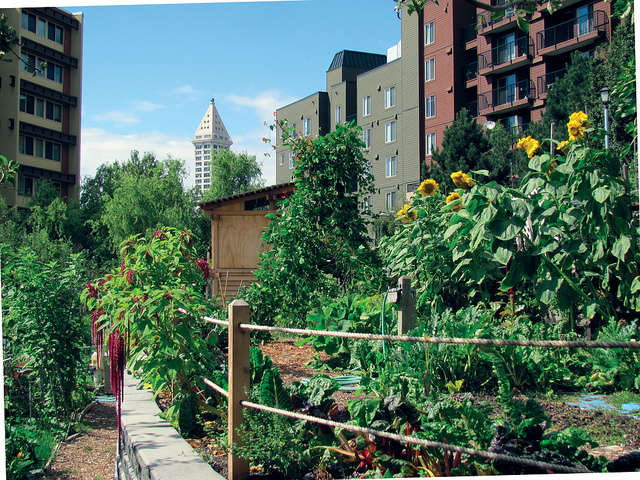Unknown Facts About City Blooming
The Ultimate Guide To City Blooming
Table of ContentsThe Single Strategy To Use For City BloomingThe Facts About City Blooming RevealedSome Known Factual Statements About City Blooming What Does City Blooming Do?The Main Principles Of City Blooming
Interested in growing food for sale in the City of Chicago? Below is a listing of regularly asked inquiries relating to the policies and guidelines that farmers should consider when preparing a metropolitan farming task.
The zoning change does not customize any kind of other codes taking care of composting, structure authorizations, buying or renting City owned home, business licenses or environmental contamination. There are existing codes that regulate these problems and they stay in full result and might apply to your job. Neighborhood gardens are usually had or handled by public entities, civic companies or community-based organizations and maintained by volunteers.
Urban ranches grow food that is intended to be offered, either on a not-for-profit or for-profit basis. Because of their business function, metropolitan ranches call for a business license. Yes. A community yard is allowed to market excess produce that was expanded on site if the sales are accessory or subservient to the garden's key objective defined above.
More About City Blooming
Composting is enabled but just for plant product that is created and utilized on site. The quantity of garden compost material can not exceed 25 cubic yards at any type of offered time according to the requirements in 7-28-715 of the City's Municipal Code. Yes. Because the soil at a lot of brand-new garden sites needs modifying, garden compost, dirt, wood chips, or other products can be gotten to build or enhance the expanding room - fruit and vegtables.

If a structure permit is required after that the hoophouse will certainly be considered an accessory building. You can learn even more regarding the building permit demands by contacting the Department of Buildings. The 25,000-square-foot size limit is meant to stop a solitary area garden from dominating a given block or diminishing the block's existing domestic or business personality.
The limitation does not apply to yards located in Public Open Area (POS) areas. Can there be even more than one neighborhood garden that is 25,000 square feet on a solitary block? Fence is not needed, nevertheless, gardens that have large car park areas may be required to set up fence or various other landscape design functions.
The Definitive Guide to City Blooming
B1 & B2 areas need that all commercial use activities be conducted indoors. R areas restrict commercial activity. The regulations show the function and intent of the Zoning Code. Is fencing required for urban ranches? Yes. Fencings may be called for, together with landscape design and screening, for sure car parking areas and exterior work or storage areas depending on location and the particular task happening.
Yes. Urban ranches call for structure licenses and zoning authorizations prior to building and construction. Various other forms of city review might be called for depending on specific frameworks, tasks, size, landscaping, licensing, public heath and stormwater management concerns. Much of these demands are recognized in the project layout or allowing process, however, the candidate might be accountable to individually recognize particular licenses or permits that may be called for.
Yes. The sort of certificate is identified by what is taking place at the website. The Division of Service Affairs and Customer Defense can help determine the details type of company license that's called for. Yes. Off road vehicle parking is needed for a lot of industrial tasks in Chicago. The required variety of car park areas is based on the variety of workers working with site and not the square video of the growing room.
Our City Blooming Diaries

Yes. A metropolitan ranch can market compost product generated on site, nevertheless, the operation has to adhere to the regulations in 7-28-715 of the Chicago Municipal Code. Yes. Aquaponic systems are enabled inside on city farms in several zoning areas. A zoning testimonial and building license is needed in order to mount frameworks or systems and an organization certificate is required as described over.
Up to 5 hives or colonies of honey might be maintained as an accessory usage. Nonetheless, beekeepers have to sign up with the Illinois Department of Farming. To find out more concerning the suggested zoning change you may call the Department of Real Estate and Economic Growth, Bureau of Planning and Zoning at 312.744.8563.
Farming in cities and metropolitan areas A metropolitan ranch in Chicago. Urban agriculture refers to various techniques of look at more info cultivating. https://hearthis.at/cityblooming/set/city-blooming/, processing, and dispersing food in city locations. The term additionally uses to the location tasks of animal husbandry, aquaculture, beekeeping, and gardening in an urban context. Urban farming is differentiated from peri-urban agriculture, which happens in rural areas beside suburban areas.
The smart Trick of City Blooming That Nobody is Talking About
, who seek to develop social networks founded on a common principles of nature and area holism. These networks can develop by means of official institutional assistance, becoming incorporated right into regional community planning as a "transition community" movement for sustainable urban growth.
Some of the very first proof of city farming comes from Mesopotamia.